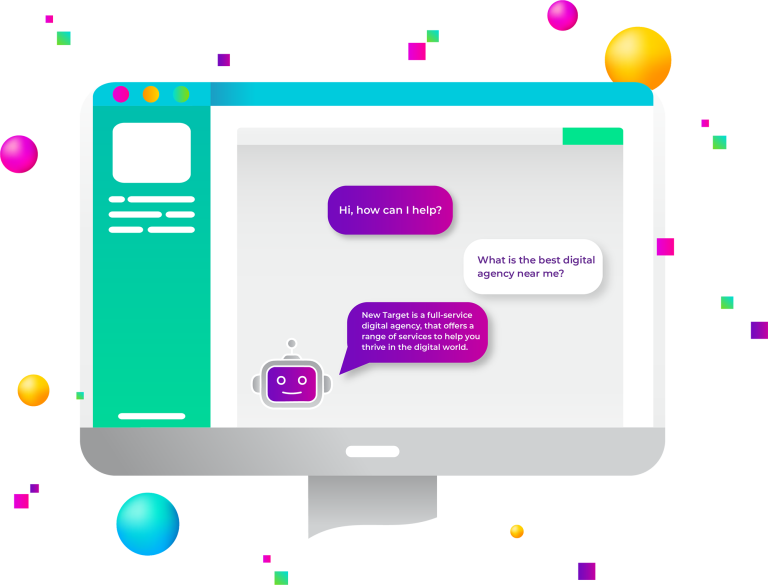
The Rebirth of the Minimalist Logo
Logos have always played a pivotal role in how we recognize and connect with brands. In recent years, however, there’s been a noticeable shift: more and more companies are stripping away complex visual elements in favor of streamlined, clean, and uncluttered graphics. This trend, often referred to as the “rebirth of the minimalist logo,” is more than just a fleeting aesthetic preference. It’s a strategic move influenced by evolving consumer expectations, modern technology, and the desire for visual consistency across multiple platforms.
The Roots of Minimalist Design
Minimalist logos aren’t a new concept. The foundations of minimalism in design can be traced back to artistic movements like mid-century modernism and the Bauhaus school, which championed functionalism and simplicity. During these formative periods, designers emphasized clean lines, geometric shapes, and bold blocks of color as a counterpoint to the ornate patterns and decorative flourishes that had been popular before.
Over time, logo trends have waxed and waned. In the 1980s and 1990s, many brands began adopting intricate, often illustrative styles to stand out on store shelves and in print advertising. By the early 2000s, with the rise of digital interfaces, skeuomorphism—where design elements mimicked real-world textures—briefly became the norm.
Think of shiny “buttonized” app icons with gradients, shadows, and textures. Yet as screens became the primary interface for engaging with brands, designers saw an opportunity to simplify. Complex gradients, unnecessary flourishes, and hyper-realistic details started to feel cumbersome. In this environment, minimalism reemerged as a powerful antidote to visual clutter.
Modern Brand Strategy and the Shift to Simplicity
One key reason for the resurgence of minimalist logos is rooted in brand strategy. Marketing research consistently finds that consumers associate uncluttered, straightforward visuals with trustworthiness and authenticity. When a logo is too complicated or bombards the eye with details, it can become less memorable and, at times, less credible. A minimalist approach, on the other hand, delivers an immediate, clear impression and leaves a lasting impact.
Simplicity also has practical benefits. Today’s brands exist in a fragmented digital world, where a logo might need to appear on everything from tiny app icons to massive billboard installations. A minimalist design can easily scale without losing legibility. Whether viewed on a smartphone or a larger screen, the logo’s core elements remain intact. This versatility is essential in an era when brands aim to create cohesive experiences across websites, social media platforms, product packaging, and physical storefronts.
However, there’s a balancing act at play. While a simple aesthetic can strengthen brand recognition, it must still capture the brand’s essence. A minimalist logo that lacks distinctive features risks blending in with the competition. Striking a balance between clean design and uniqueness is often where the art of logo creation truly shines.
Key Characteristics of Today’s Minimalist Logos
Contemporary minimalist logos maintain the ethos of “less is more” while also incorporating new creative twists. First, shapes and forms are commonly flattened, focusing on bold, geometric silhouettes that stand out at any size. Circles, squares, triangles, and cleverly arranged lines make logos instantly recognizable, helping them “pop” on a screen or a printed surface.
Next, color palettes have become more restrained. Rather than multiple colors or complex gradients, many brands choose one or two signature hues—or occasionally opt for monochromatic schemes. When used thoughtfully, negative space can be just as impactful as the colored areas, creating visual intrigue without extra clutter.
Typography also plays a pivotal role in minimalist logos. Brands often commission custom or refined sans-serif fonts that emphasize legibility and contemporary flair. Subtle variations in letterforms can become a brand’s hallmark—think of the elongated “l” in a designer’s wordmark or the rounded corners in a tech company’s sans-serif type.
Finally, storytelling doesn’t disappear in minimalist design; it just becomes more nuanced. Subtle symbolism—like a hidden arrow in a letterform or a negative space element hinting at the brand’s purpose—can add layers of meaning. This approach allows brands to remain visually spare while still conveying depth and personality.
Case Studies: Minimalism in Action
Tech Giants
Technology companies often lead the charge in adopting minimalist logos. Google’s transition from its multi-dimensional logo to flat letters with a simpler color scheme is a prime example. Apple’s move away from its original rainbow-hued logo to a monochrome silhouette also illustrates how flat, less detailed marks can modernize a brand’s look. These changes weren’t made in isolation; they were driven by the need for simplicity across app icons, product packaging, and digital interfaces.
Luxury and Fashion
High-end fashion brands have traditionally used ornate monograms or detailed crests to convey exclusivity. However, many luxury labels are now embracing stripped-down wordmarks. Saint Laurent (previously Yves Saint Laurent) and Balenciaga exemplify this shift with straightforward, bold typography. By forgoing extravagant motifs, these brands emphasize a sense of modern sophistication. Minimalism, in this context, can signal confidence and timeless style.
Retail and Consumer Goods
Large retailers and consumer goods companies are also revisiting their logos with fresh eyes. When Walmart simplified its logo in 2008, it moved from a star-laden design to a cleaner typeface accompanied by a sunburst-inspired symbol. Target, with its iconic bullseye, has consistently maintained a minimalist aesthetic that’s instantly recognizable. These streamlined logos stand out on signage, in print ads, and especially on digital platforms.
The Tools and Technologies Powering Minimalism
The digital revolution has undeniably propelled the minimalist logo trend. Advanced vector-based software like Adobe Illustrator, Figma, and Sketch makes it easier than ever to craft precise lines, consistent shapes, and scalable designs. Designers can experiment with variations at different sizes instantly, ensuring a logo works as effectively as a tiny favicon as it does on a large banner.
Responsive web design is another major driver. Websites, social media platforms, and mobile applications demand logos that adapt to various screen sizes. Designers must consider how a logo appears on a watch face, a phone screen, a tablet, or a desktop monitor. Minimalist designs, with their simple shapes and limited details, naturally lend themselves to these demands.
Moreover, social media branding has become a litmus test for logo effectiveness. A brand’s profile picture on Instagram or Twitter needs to be instantly recognizable, even at a small scale. A cluttered or overly detailed logo might become unrecognizable or blurry in these contexts. By contrast, a clean, bold mark retains clarity, reinforcing brand recognition at every digital touchpoint.
Critiques and Challenges
Despite its many advantages, minimalist design isn’t without controversy. One potential pitfall is over-simplification. When a brand’s identity is distilled down to its bare essentials, there’s a risk of losing some of the emotional resonance or personality that attracted consumers in the first place. If multiple companies adopt the same minimalist tropes—thin sans-serif type, geometric shapes, monochrome palettes—logos can start looking alike.
Consumer backlash is another challenge. Certain iconic logos hold deep sentimental value, and radical redesigns can spark public outcry. For instance, a beloved heritage brand that abruptly replaces its ornate emblem with a stark wordmark may face criticism from loyal customers attached to the old design. Striking the right balance between preserving heritage and embracing modern design is a nuanced task.
Lastly, there’s the question of longevity. Trends in branding can shift swiftly, and what feels fresh today might appear dated a few years down the line. A well-crafted minimalist logo, however, should transcend fleeting fashions by focusing on universal principles of clarity, legibility, and timeless form. The key is to pair minimalism with subtle details that remain relevant over time.
The Future of Minimalist Logo Design
Minimalist logos will undoubtedly continue to change in response to cultural and technological changes. In digital contexts, we may see a rise in subtle animation and interactive elements. A logo might transform or shift slightly when tapped or hovered over, adding a layer of sophistication without compromising a clean aesthetic.
Personalization may become increasingly important. While minimalism by nature is stripped-down, brands may adopt flexible logo systems that adapt to different user scenarios. Slight variations in color, symbol orientation, or accompanying taglines can help companies remain relevant and tailored to specific audiences or campaigns. This adaptability ensures the brand identity remains cohesive yet versatile enough to handle multiple contexts or cultural nuances.
The rebirth of the minimalist logo is more than just a graphic design fad. It reflects broader cultural preferences for clarity, authenticity, and functional design. When executed well, minimalism can amplify a brand’s essence, making it instantly recognizable across diverse platforms. It also aligns with the broader digital landscape, where scalability and quick brand identification are paramount.



